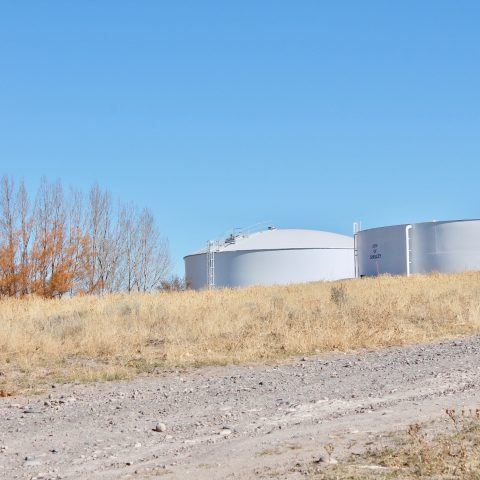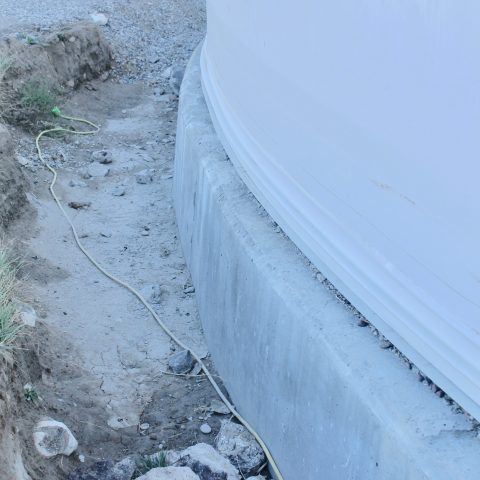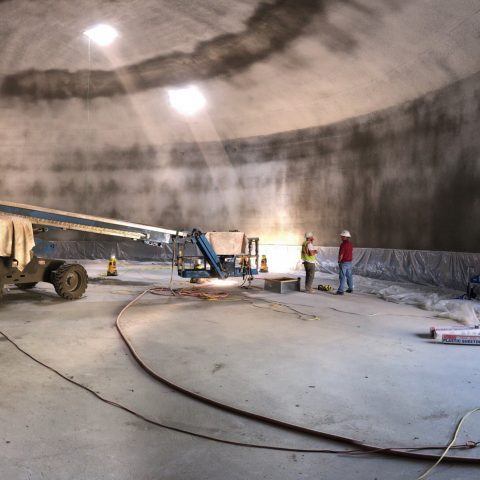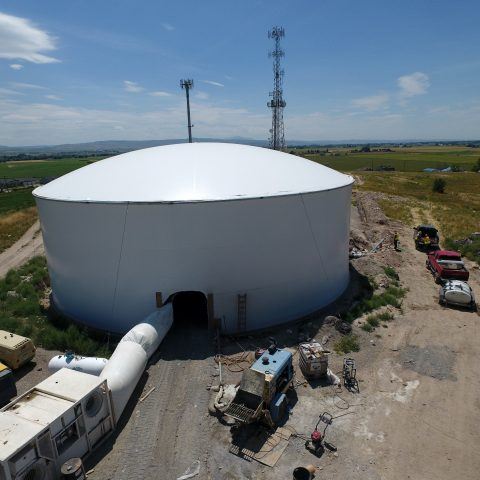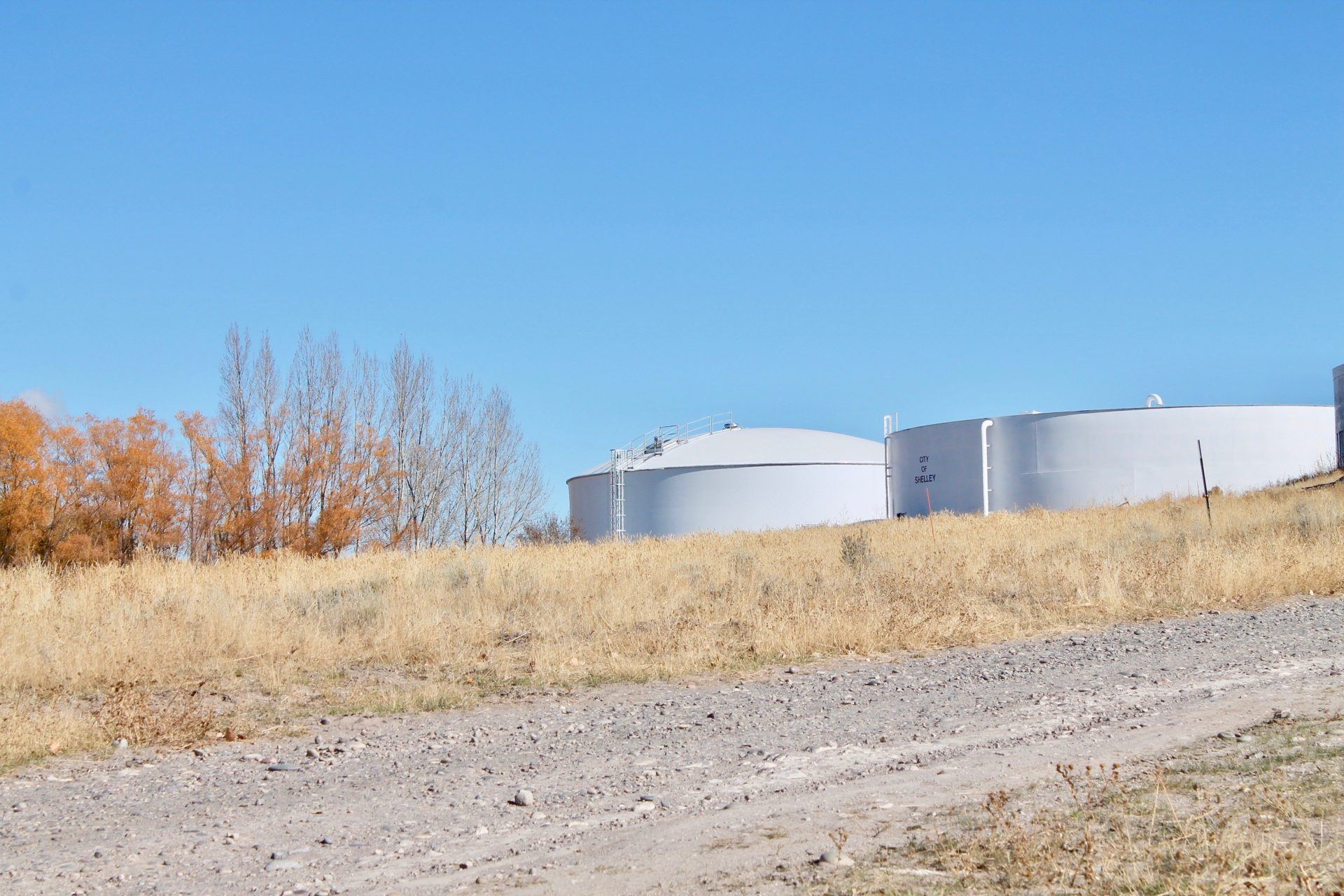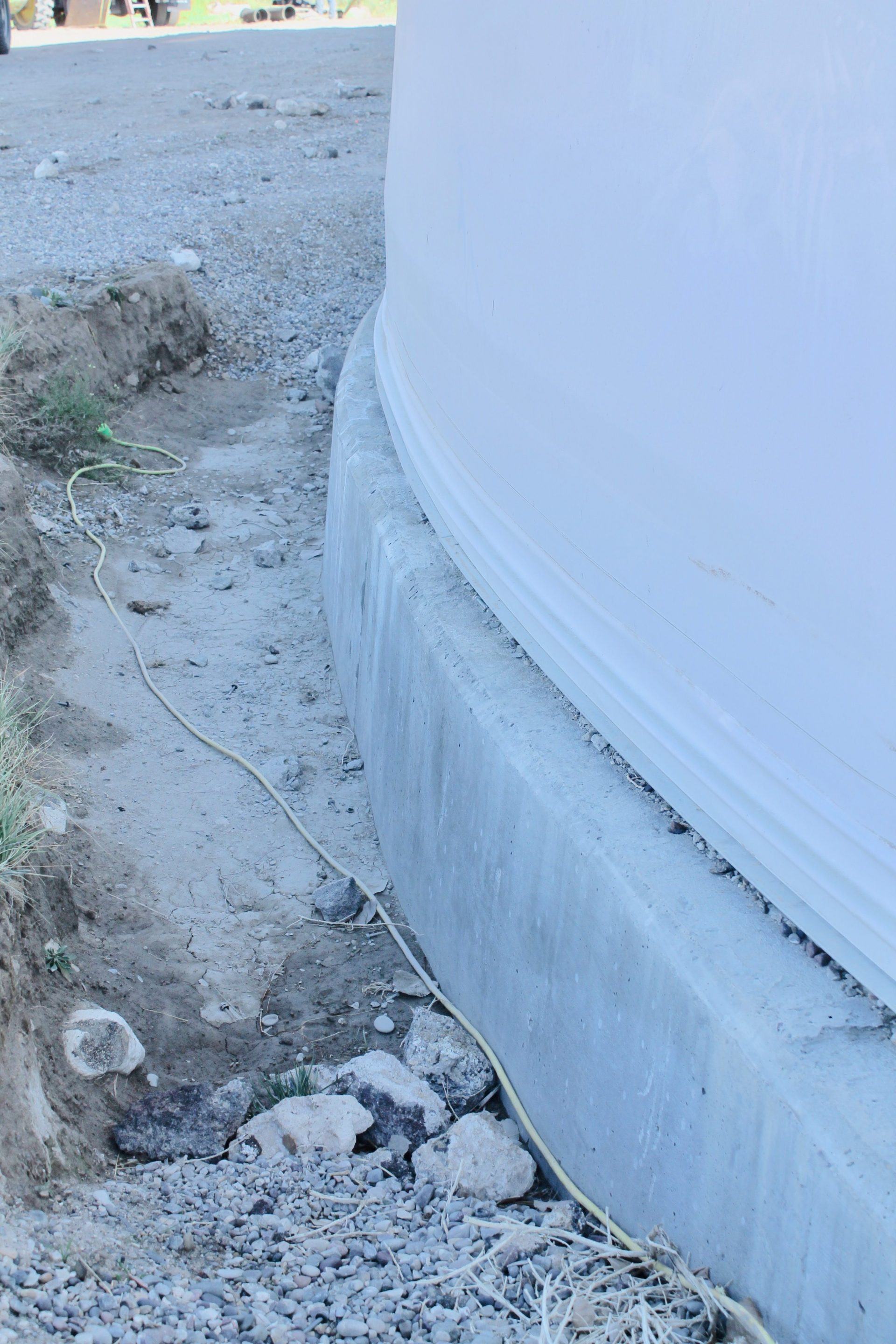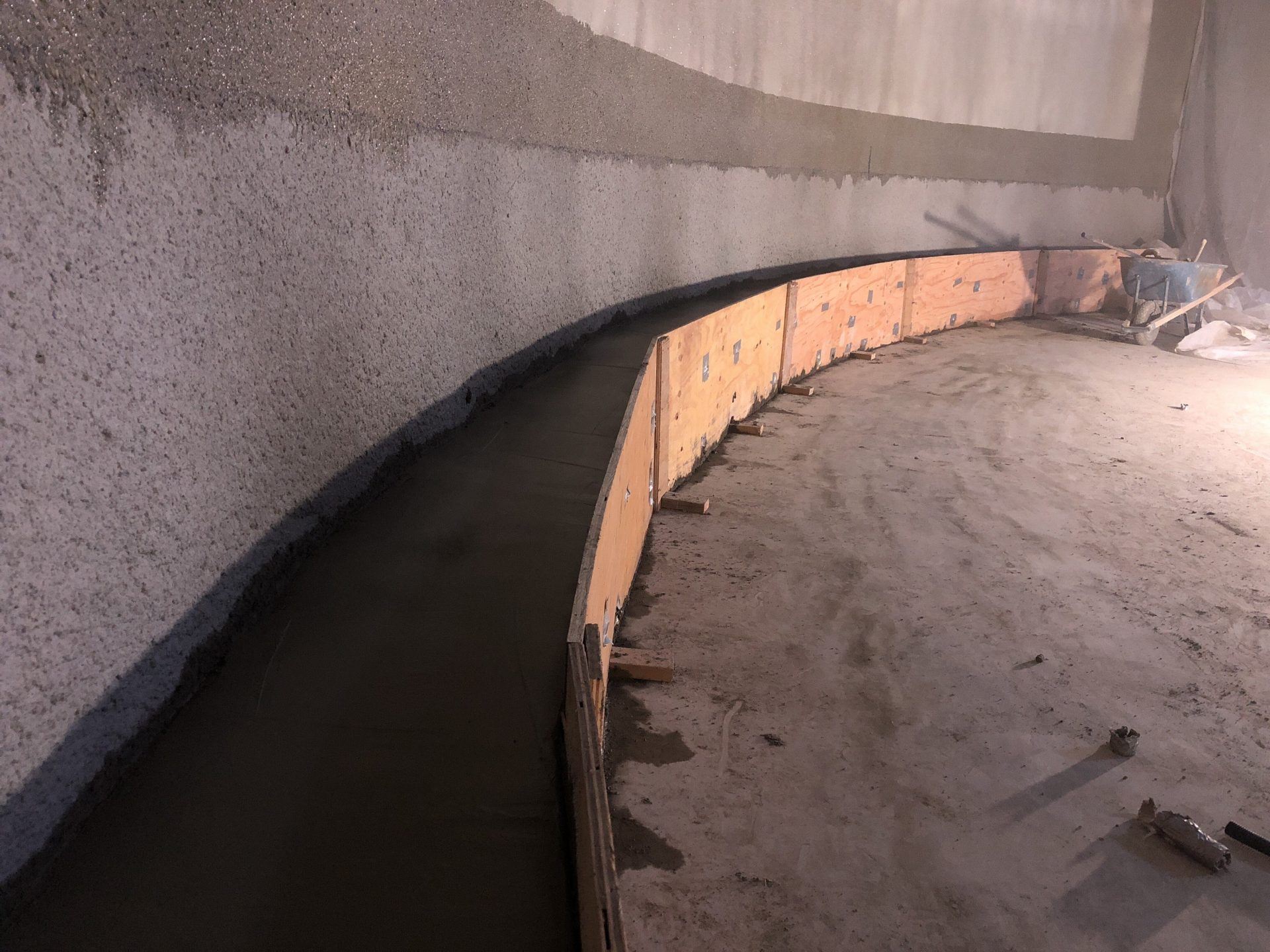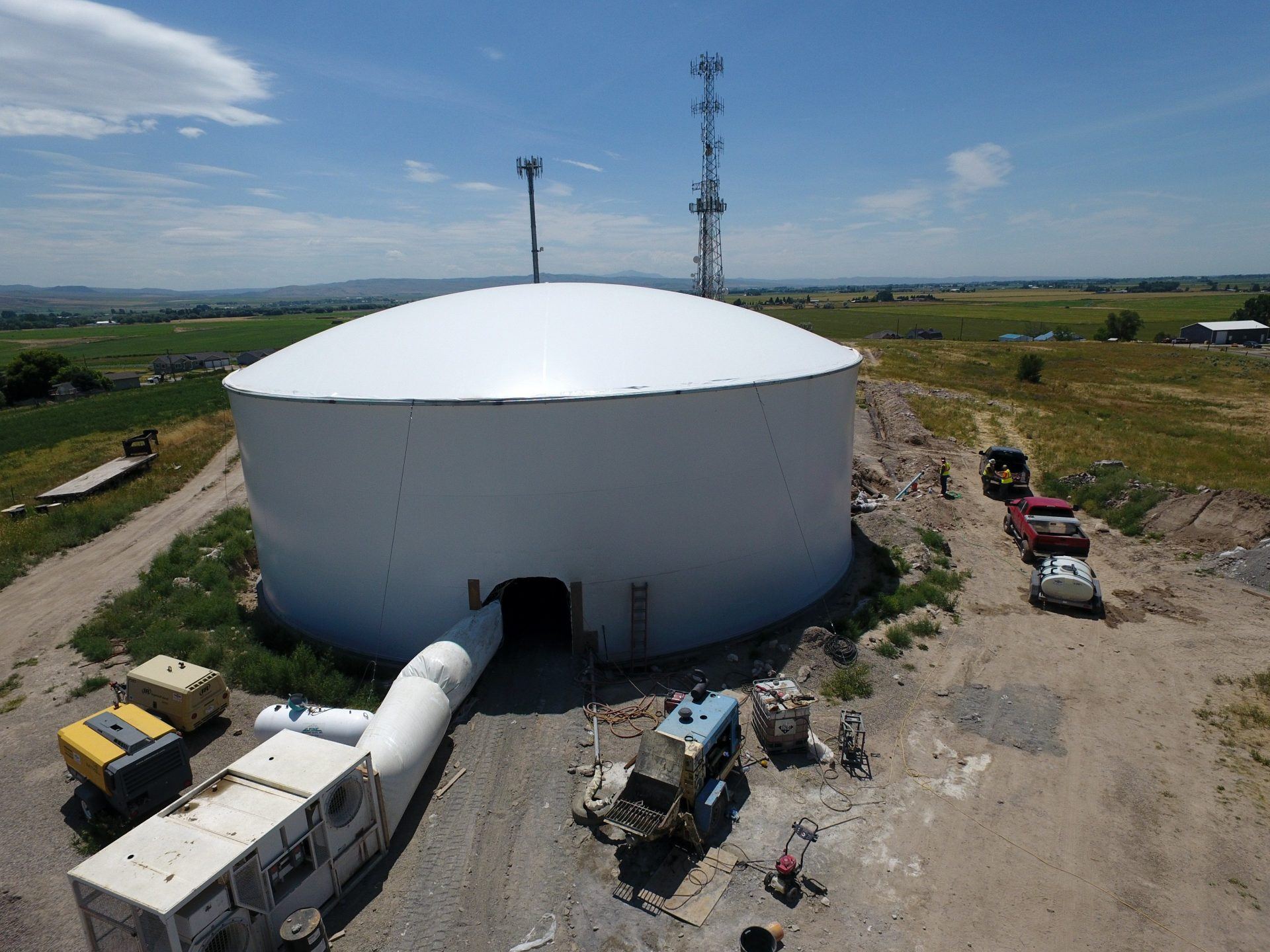Scope of Work
| Domes | Height | Diameter |
|---|---|---|
| #4987 | 33ft | 79ft |
| #4987 | 10.1m | 24.1m |
The City of Shelley in southeast Idaho faced two problems at once: The town’s 500,000-gallon concrete water tank started weeping as it approached 60 years in operation, and Shelley’s water demand had increased, leaving the city needing a tank with a firm capacity of 800,000 gallons.
To solve both issues, Dome Technology presented its AWWA D115 liquid storage tank, a model with post-tensioning embedded in the walls rather than wrapping the pre-stressed wire around the outside of the tank as seen in AWWA D110 tanks.
According to Mayor Stacy Pascoe, Dome Technology was contracted for the job based on this technology and the low bid. The city anticipated spending $1.1 million on a new tank plus a small cushion for change orders. Selecting Dome Technology’s model shaved nearly $400,000 off the cost, allowing the city to use funds to upgrade an existing well.
Saving that kind of money is a big deal to a small town with less tax revenue. “We have a lot of older fixed-income people. When I look at spending money, I base it off of needs first, and then if it was my own money, would I spend it on that,” Pascoe said. Dome Technology’s tank checked both boxes.
To build the tank, an airform fabricated in the exact shape of the finished water tank is inflated. The vertical stem walls are sprayed with concrete, as is the low-profile domed roof. Post-tensioning cables are attached to the stem wall, along with vertical and horizontal reinforcing rebar. Concrete is then sprayed to embed the cables. Dome Technology tanks compete with the D110 tanks in cost and construction time.
For cities looking for a pre-stressed concrete tank, “we’ve just brought a tank to the market that will save municipalities significant money,” said Dome Technology sales manager Daren Wheeler. “Our building method is just more efficient with less waste. It’s a win for taxpayers.”
